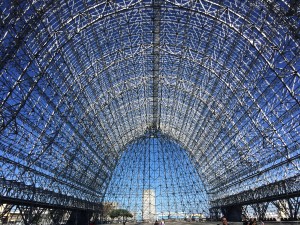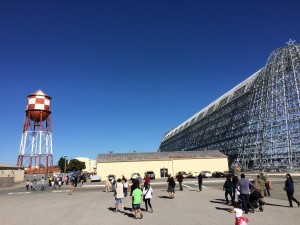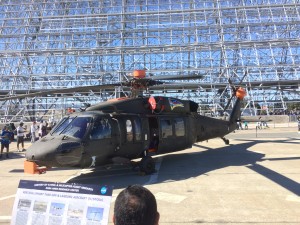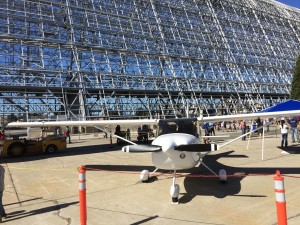Book Review: “The Future of the Mind: The Scientific Quest to Understand, Enhance, and Empower the Mind” by Michio Kaku
Reading this book is like reading a science fiction with real science explained by a real scientist. As a engineer, I particularly like Dr. Kaku’s technical ability to separate out the science from the fiction, especially on some of the popular scifi movies like iRobots, 2001: A Space Odyssey, Matrix, Total Recall, The Planet of the Apes, and etc. From the book, I can derive that the author must be a movie buffs. Many topics are covered in the book. You can check out a very summary speech video by Dr. Kaku in the videos list below:
Dr. Michio Kaku’s Speech at Microsoft
Dr. Michio Kaku’s Youtube Channel
Let me outline some of my takeaways from the book here:
1. Our brains are a truly amazing machine, capable of emotion, long-term and short-term memory, reasoning and simulating the future. It consists of more than 100 Billions neurons.
2. The brain is like a large corporation: 1) Most information is subconscious (CEO is not aware). 2) “Emotions” are rapid decisions made independently at a lower level. 3) There is a constant clamoring for the CEO’s attention. 4) Final decisions are made by the CEO in the command center (prefrontal cortex). 5) Information flows are hierarchical.
3. The author defined “Consciousness” as the process of creating a model of the world using multiple feedback loops in various parameters (e.g. in temperature, space, time and relation to others), in order to accomplish a goal (e.g. mates, food, shelter). Three levels of consciousness: Level 1: reptiles-like feedback loop, Level 2: create a model of their place in space and relative to others (social animals with emotions). Level 3: Capable of simulating the future (like humans). Humor is a sign of Level 3 consciousness because of a surprise from our own simulating. Self-awareness is creating a model of the world and simulating the future in which you appear (limited by the “mirror test”).
4. Telepathy: Reading of the mind is possible through an MRI machine (which can be as small as a cell phone) and matching of the brain pattern against a “dictionary.”
5. Telekinesis (mind controlling matter): This is already possible using EEG and MRI to control external mechanical machines. The author talked about extending the control through the “brain-net”, total immersion in entertainment and exoskeletons, use of avatars and surrogates.
6. It’s now possible to record/download memory from the mice brain and then replay/upload to the mice. It’ll take a few decades to do that for humans, when people can shop for the knowledge they want and upload it. There are benefits to erase certain memory to cure post-traumatic disorder (PTSD). Once a person’s memory can be downloaded and uploaded, what’s preventing a person to live forever by leaving a legacy of memory and upload it to someone or some future avatar/surrogates? Provocative!
7. Photographic memory is due to the brain’s inability to forget, like a savant. Forgetting is an active process, requiring intervention by dopamine.
8. What separates us humans from chimpanzees are just 1.5% of genes. The critical ones are the HARI (folds our brain for more surface area), and ASPM (speech, language) genes. RIM-941 gene was discovered to be unique in homo sapiens only. Potentially, scientists could tweak the ASPM genes and allow humans to evolve to be more intelligent and turn chimpanzees into humans.
9. Due to thermal dynamics and energy conservation reasons, our human brain seems to be maxed out in term of intelligence level.
10. Dreams can potentially be projected into the contact lens of a sleeping person and enact a dream. Also dreams can be captured via MRI scans.
11. Many mental diseases like OCD are due to the various parts of the brain getting stuck in the infinite feedback loop. Sometimes an extra neutrotransmitter like serotonin can be given to reduce the symptom. They’re largely caused by the disruption of the delicate checks and balances between competing feedback loops that simulate the future (usually because one region of the brain is overactive or underactive). DBS (Deep Brain Stimulation) has been used with some success.
12. On AI (Artificial Intelligence), today’s robots are at Level 1 (difficulty navigating in the real world) like a worm or slow insect. Robots need to have emotions, linked to consciousness, especially empathy valued by the owner and fear as a defense mechanism. The most difficult one is humor.
13. About reverse-engineering the brain, the author suggested 3 methods: 1) simulate the brain electronically with a computer, 2) map out the neutral pathways of living brains, 3) decipher the genes that control the brain development. By doing so, we may be to 1) find the origins of certain mental diseases, 2) pinpoint precisely which cluster of neurons are misfiring, 3) help AI, 4) determine how the long-term memories are stored, 5) allows immortality.
14. Predicted by Dr. Ray Kurzweil that by 2029, a $1000 PC will be a thousand times more powerful than the human brain, which can then be reverse-engineered. By 2055, $1000 PC will equal the processing power of all the humans on the planet. 2045 is the year of “singularity” when the machines will surpassed humans in intelligence. That’s a pretty brave prediction. I hope Intel to live up to that and I can live to see it happen.
15. Traveling in space may require us to transfer our consciousness via a light beam to an avatar/surrogate without our physical body as it’s limited by the harshness of space travel.
16. Our mind has been evolved to be the most intelligent wetware 1200 light year from the earth. We should be grateful how lucky we are to be living on this planet. Thanks to this 3-lbs flesh on our shoulders; it’s a real master piece.
Happy Halloween! Pumpkin Carving Contest at Work
Recorded this pumpkin carving contest at work.
Happy Halloween!
Movie Review of “Dead Poets Society”
Dead Poets Society is one of the best movies that Robbin William ever performed in. Today I watched the DVD with my 13-year-old daughter. I remembered when I first watched the movie at the movie theater, I was quite moved by the message that one must “seize the day” (“Carpe Diem”). I often found people, myself included, allow days to go by as if it’s another day to check off without living each day to the fullest.
One doesn’t have to join the Dead Poets Society to the suck the marrow out of the life. But it does help to have people around you push and encourage you.
I was taken back by Neil’s suicide because his Dad commanded him to drop acting where his passion lied and forced him to become a doctor. I hope none of the youths should take away from the movie that it’s the proper approach to resolve the conflict with their parents. And I also hope that parents nowadays (tigers or not) are more inclined to listen to their kids’ plead to pursue their own passion.
On one hand, I do not agree to the old academic way of cramming the students what they think the students should know – often the dry and boring materials. Teaching the kids to think for themselves is one of the critical teaching objectives. I cheered when Todd could break out of the shell and poured out a beautiful poem when pushed by Mr. Keating and Charlie could push himself to win the heart of his dream girl (though it’s mostly hormone driven). Of course, Neil Perry went against his dad’s command to pursue his acting gig. On the other hand, I also do not subscribe to Mr. Keating’s (Robbin Williams) ripping (literally) the pages out of the old ways as the young children can easily misinterpret the message as the license to rebel without the right reasons. The tragic suicide of Neil was a case in point.
Having watched the movie when I was younger empathizing the high school kids and now watched the DVD as a parent of a teenager, I can now see the both sides clearly. It’s important to have good communication between parents and children. The children must see the good intention of the parents and force the conversation upon encountering conflicts. No reason to wrap up the negotiation too quickly or jump the “gun.” After all, it’s your life any how. The parents must not push the kids beyond the “breaking” point. They may need guidance sometimes but they have the free will. It’s best they hold on to their passion to achieve happily something great than to live their lives like a zombie.
I especially like Mr. Keating for asking the students to step on top of the table and forcing them to see things differently. It’s a nice trick to keep life interesting.
What a great movie! Robbin Williams was brilliant in this movie and suit his character well. I truly feel the loss of his talent.
Tour of NASA’s Ames Research Center in Moffet Field – 75-Year Anniversary Open House
To celebrate the 75 anniversary of NASA, it held an open house at the Ames Research Center in Moffet Field of Mountain View, California – the heart of Silicon Valley.
Despite the reservation system to limit the number of people, it was like a zoo traveling in and out of the center. The bus shuttle between the front gate and the center of the complex seemed a bit silly that created lots of traffic and long lines for the visitors. And there were many long lines trying to have a hands on cockpit experience and a few popular spots.
For me, it’s the first time visiting the center, having lived in the valley for well over 25 years and driven by almost every week day going to and from work. I was surprised by how huge the place was. The hanger, long a symbol of Moffet Field, where it served as a garage for the aircraft was a lot bigger and elegant than I thought. The old planes and helicopters were museum pieces and had lots of history behind them. Here are some of the pictures I took:



















Overall, it was a good day to venture into a place long held a mystery and pride in the minds of the Silicon Valley residents.
Book Review: “The Chemistry Between Us” by Larry Young PhD and Brian Alexander
Until reading this book, I didn’t know how much of our behaviors are shaped by the chemistry in our brain, especially the ones between the sexes. Many kinds of our bodily chemicals are introduced here: oxytocin, dopamine, vasopressin, tosterone and etc. I learned a lot about the sexual behavior of animals like Angler Fish, Bonobos, and etc. This is a very interesting book. In a way, it ruined my perception of love but it explains a lot of our human behavior between sexes. We owe a lot to our human evolution that shapes our brain to propagate our species. Most of time it’s above our “free will.” This is an excellent book if you’re interested in how the various chemicals affect our brain.
A short summary is here:
Chapter 1: Building a Sexual Brain
The story of machihembra was the first I read about. Interesting that girls turn into a boy at twelve years old in Dominican Republic. Society does not make sexual gender. Boys and girls are made differently started in the brain, not dictated by socialization nor the genitals which they’re born with.
Chapter 2: The Chemistry of Desire
Estrogen or production of progesterone receptors during ovulation (in estrous) puts animals (mouses, cats) and women in heat or more receptive to mating. Testosterone drops when men are near their babies or losing a sports match. It rises when encountering another ovulating female, also more mate-guarding behavior.
Chapter 3: The Power of Appetite
Our appetite is based on MPOA (medial preoptic area), nucleus accumbens, the amygdala, and the VTA. Dopamine hits D1 receptors of MPOA, we become attentive to sex-related cues. MPOA directs the parasympathetic nervous system to send blood to the genitals, creating erections in males and clitoral engorgement in females. VTA transmits dopamine into the prefrontal cortex (disinhibiting sexual desire and giving us tunnel vision for cues that lead to satisfying the desire. After orgasm, Endocannabinoids, the brain version of marijuana, make use a little sleepy. Serotonin gushes, inducing a feeling of calms, satiety, and satisfaction. Endorphins floods into the limbic system and hypothalamic area. Fetishes or partner preferences can be developed from early sexual experience due to satisfying the specific appetite via dopamine release.
Chapter 4: The Mommy Circuit
Oxytocin causes contraction for giving birth and induces maternal behavior. Prolactin stimulates the breasts to make milk and stimulates the MPOA, which signals the amygdala to suppress the fear and cause the mother to be calmer. Dopamine rewards the mothers for caring for their children.
Chapter 5: Be My Baby
Prairie voles (Monogamy, mated for life) vs. Meadow (Polygamy) voles. More oxytocin receptors in the accumbens, reward center in the brain, are seen in the Prairie voles. Bonding takes all oxytocin, dopamine, opioids, and good social memory (recognizes faces/smell) with the partner when the feel-good cocktails are released. Couples when nose sprayed with oxytocin (or having the vaginal-cervical stimulated as in sheep) tend to be exhibit more “positive” behavior/communication toward each other and create the bond. “A man is a woman’s baby.”
Chapter 6: Be My Territory
Vasopressin in males stimulate territory guarding behavior. Switching on the avprla gene makes the male meadow voles monogamous and good bonders due to increase of Vasopressin receptors. “A woman is an extension of a man’s territory.”
Chapter 7: Addicted To Love
Drug addiction is parallel to falling in love.
Vasopressin serves as a chemical trigger (like in a loaded rifle) in the CRF system to fire off the HPA axis during separation from partner or drug in an addict. For humans, “falling in love is like putting a gun to your head.”
Chapter 8: The Infidelity Paradox
Normal self control, your prefrontal cortex’s talk with your amygdala, ventral tegmental area (VTA) and accumbens, said “cut it out!” before cheating takes place. Once married/bonded, male’s testosterone and stress hormone drops, hence having less sex. This is a phenomenon named after Calvin Coolidge: slow death of passion experienced by many human couples, and rejuvenation of sexual appetite and performance by lure of novelty and infidelity. There is a D4, cheating gene, associated with human ability to resist impulsive desire or yield to temptation.
Chapter 9: Rewriting the Story of Love
Knowing how all the various chemicals work in our brain, do we feel we still have the free will or are we puppets of those “drugs” inside our brain. Is love induced by a drug still a love, real and true? That’s the difficult question.
A Volunteered Sweet Potato Flower In My Garden
One of the funnest things about gardening is that you often find things that surprise you. Sometimes they are bad (like pests) and sometimes they are simply pleasant.
Two weeks ago, I discovered that there is a sweet potato growing in my raised garden – a volunteer. Its vines are growing all over the raised bed. It must have stayed behind from last year’s harvest – a pleasant surprise.
A couple of days ago, I discovered that it actually grew flowers. See below picture:

For a tuber plant like the sweet potato, flowers are almost redundant because most people grow them out of “slips” or slices from the “eyes” of the potato. But I like the way it adds the white and purple color to my raised bed.
There are just a couple of months left before the weather gets too cold and the day gets too short to grow something like a sweet potato. But I probably keep it as long as I could. The potato leaves makes a healthy green sauteed dish too.
Sweet!
